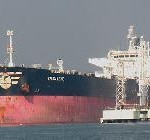The ‘Lady Hughes incident’, as a confrontation between British and Chinese authorities in 1784 came to be called, perhaps holds lessons for the ongoing dispute between India and Italy.
In February 2012, two marines of the San Marco Regiment, Salvatore Girone and Massimiliano Latorre, who were part of a military detachment protecting the Italian oil tanker Enrica Lexie, opened fire without warning at two Indian fishermen off the coast of Kerala. The marines claimed that they mistook the fishermen for pirates. The case has caused tension between the two countries. Italy has questioned India’s right to prosecute the marines – who are now on trial in India.
Almost 230 years ago, a similar incident occurred in the seas off China, which at the time was one of the wealthiest regions of the world. The average incomes in some parts of China were comparable to incomes in the wealthiest parts of Europe. [1, 2] International trade played a significant role in the making of this wealth. It was a period of sustained peace, with a flourishing network of interregional markets for trade between Chinese and foreign merchants. On China’s eastern seaboard, an intra-Asian network facilitated commerce between China and its neighbours in the Pacific and Indian Ocean regions. European merchants appeared on this scene in the late 1600s from around the Cape of Good Hope in Africa or sailing across the Pacific from the west coast of Mexico. They purchased Chinese tea, silk, and porcelain in exchange for Spanish-American silver. [3]
In the early years of this trade, the Chinese authorities were considerably lenient with the Europeans in legal matters. Local officials had established a system through which the Europeans could pay financial compensation when they caused harm to Chinese subjects. But as the trade increased, the Chinese became stricter. From the 1750s, they began to more aggressively exercise their jurisdiction over cases of criminal infractions involving Europeans. British merchants, who in this period had come to dominate the European trade, bore the brunt of this change in policy. The Lady Hughes incident occurred in this context.
The crisis began when a British ship, the Lady Hughes, fired a salute inadvertently killing two Chinese fishermen in the waters off the port of Guangzhou. The Chinese authorities demanded that the ship’s captain hand over the sailor. Unwilling to subject one of his men to Chinese law, the British captain claimed to have no idea which of his sailors was responsible for the firing. In response, the local authorities arrested the ship’s supercargo. They followed this up with a complete prohibition of all trade between Chinese and British merchants. The ban was soon extended to all European traders, including Dutch, Danish, French, and American merchants. The Chinese hoped that this would increase pressure on the British. When these measures failed, the local authorities blockaded the port with war junks, preventing Europeans in Guangzhou from reaching their ships.
The crisis persisted. European merchants in nearby Hong Kong and Macau banded together and sailed up the Pearl River Delta to confront the Chinese fleet blockading Guangzhou. During this period, most vessels were well-armed. Intimidated by the European fleet, the Chinese authorities were forced to alter their tactics. To create dissension amongst the European merchants, they lifted the blockade and trade embargo against all Europeans (and the Americans) except for the British. The Dutch, Danish, and French merchants accepted the offer and resumed trade. The Americans, in a display of early Anglo-American solidarity, refused and stood by their British counterparts. The British eventually backed down and surrendered the sailor to the Chinese authorities. The sailor was later executed.
This two-century old incident mirrors, in some ways, the ongoing case of the Italian marines. Clearly, Europeans have a long history of killing unarmed fishermen in Asian waters and an equally long tradition of trying to protect such killers. The Chinese authorities emerged successful from the confrontation only after using strong-arm tactics. They also judiciously used international diplomacy.
All this perhaps holds lessons for India. Only a firm stand that does not cater to popular public demands, along with diplomatic finesse, can ensure that Indian interests are safeguarded for the future and that another Indian fishermen does not have to die at the hands European marines.
Aniruddha Bose is a specialist in Modern South Asian history.
This blog was exclusively written for Gateway House: Indian Council on Global Relations. You can read more exclusive content here.
For interview requests with the author, or for permission to republish, please contact outreach@gatewayhouse.
© Copyright 2013 Gateway House: Indian Council on Global Relations. All rights reserved. Any unauthorized copying or reproduction is strictly prohibited
References
1. Gunder Frank, A. (1998). ReOrient: The Global Economy in the Asian Age.California: University of California Press.
2. Pomeranz, K. (2000). The Great Divergence: China, Europe, and the Making of the Modern World Economy. Princeton: PrincetonUniversity Press.
3. Waley-Cohen, J (1999) The Sextants of Beijing: Global Currents in Chinese History. New York: W. W. Norton & Company.


